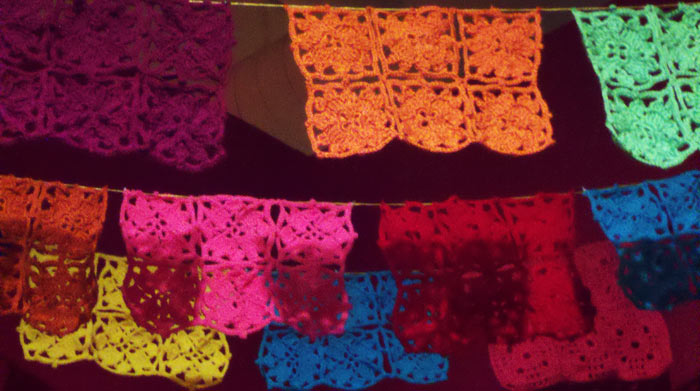The Day of the Dead is often misconstrued as a holiday celebrating death, but on the contrary, it is about celebrating life. More specifically, it’s about celebrating the lives led by loved ones that are no longer with us. On this holiday, we remember their time with us on Earth and pay homage to them through altares and ofrendas. The idea is that these altars and their offerings will be viewed and enjoyed by the spirits of our loved ones as they return to hear our memories and wishes for them on this day.

The ofrendas displayed at the new Vida Breve: Day of the Dead exhibit at the National Museum of Mexican Art were no different. Together their bright colors shone like a beacon to the afterlife, inviting the spirits they honored to return and see what they inspired. Each of them had their own personalities, much like the people for which they were made.
There were the name badge, pins and favorite liquor laid out among the pictures and other belongings of one of the deceased. The walls covered in gold records and scribbled with messages to a young Chicago musician whose life was cut too short. The papel picado and paper mache skeletons crafted by the hands of grammar school students, which each grade constructed for a specific part of a display dedicated to those who lost their lives in the earthquakes in Haiti and Chile. The sugar skulls, papel picado-esque banners, pan de muerto and marigolds all hand-knit/crochet by local crafter community El Stitch y Bitch. It was this display that really grabbed my attention. My recent foray into the crochet world gave me an appreciation for the number of hours and cramped hands that must have gone into each hand-crafted element.
Intrigued, I reached out to Thelma Uranga of El Stitch y Bitch to learn more about the crafting circle and their thoughts behind their contribution to Vida Breve.
How did the members of El Stitch y Bitch come together to form the group?
Stephanie Manriquez and I started the group two years ago in the hopes of creating a space for crafters in the Pilsen, Bridgeport and Little Village communities. El Stitch y Bitch has become a space where many people come together, connected through the craft and learn different techniques, or come and relax and work on a project.
What made your group want to contribute to the Vida Breve exhibit? What inspired Entre Estambre y Tejidos Recordamos a los Muertitos?
I was inspired by the different stories that our knitters and crocheters brought to the group. Many of them learned the craft from a family member (often from a grandmother who had passed on) and knitting or crocheting was that much more special to them because they were able to carry on the tradition. I was also thinking about my grandmother who used to knit and crochet. She lived in Texas and passed away about 4 years ago. My childhood memories of visiting her were these sweet crocheted gifts and her attempting to teach me the craft. I’ve only been knitting and crocheting for 2-3 years, but I often think about her and am so happy to have that connection to her. Making an all knit and crochet altar was the best way to pay homage to our ancestors who passed on their techniques and traditions to us.
What do you hope people will take away from Entre Estambre y Tejidos Recordamos a los Muertitos?
The ofrenda was truly a labor of love. Everyone who contributed was totally dedicated to their projects in celebration of craft culture and their crafty ancestors. It is about making a connection to the past and honoring our ancestors in a contemporary way.
